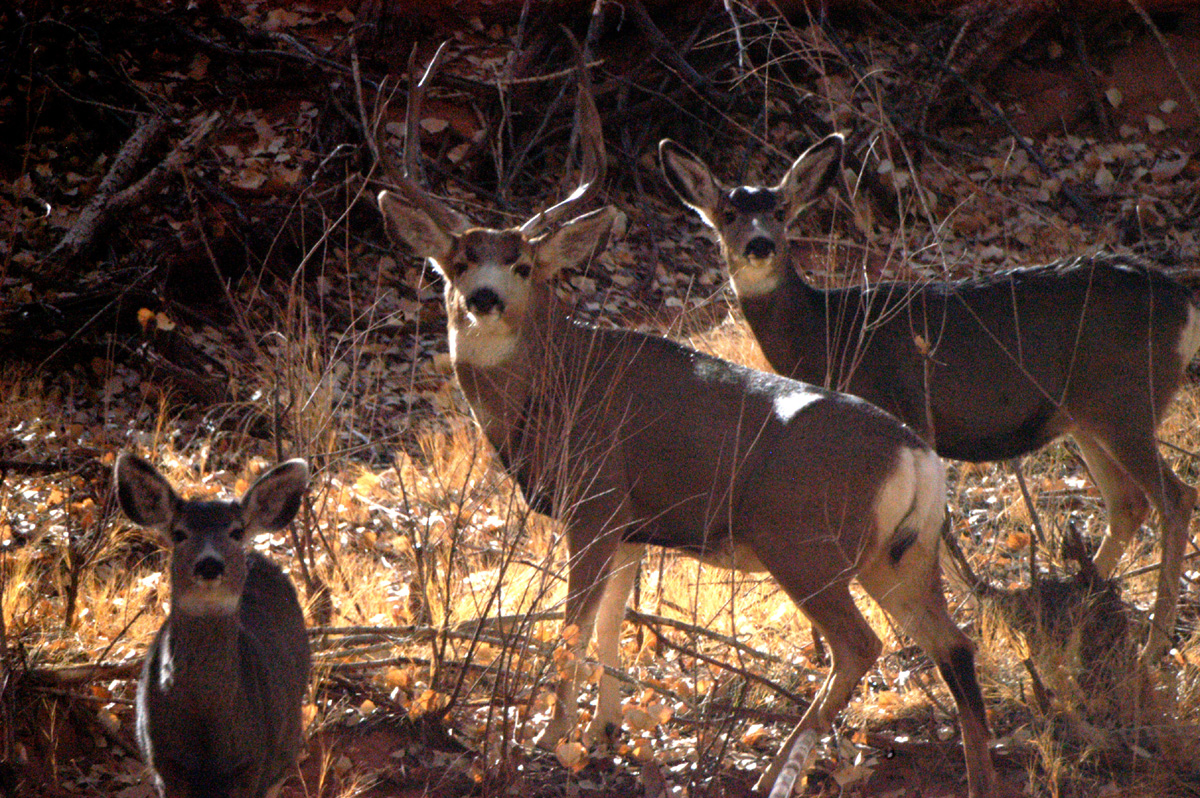Mule Deer video clip
The Mule Deer differs from its eastern cousin, the white-tailed deer, in several ways, primary among which is the large ears that move constantly and independently. In addition, the Mule Deer lets its thin, black-tipped tail droop downward, while the bushy white tail of its cousin is generally uplifted. Also, they have a distinctly different gait from the leisurely, graceful leaps of the white-tail; a Mule Deer when startled will move in a series of stiff-legged jumps but can reach a speed of about 45 mph for short periods. The color is usually a dark gray-brown, while the White-tail deer are tan in color, with a larger tail.
Mule deer average 4 to 6-1/2 feet in length and 3 to 3-1/2 feet high at the shoulder with males being somewhat larger than females. The bucks' antlers, which start growth in spring and are shed around December each year, are high and branch forward, forking equally into 2 tines with a spread up to 4 feet.
Mule deer have larger feet than the White-tail, which allows them to claw out water as much as two feet deep, which they can detect with their keen sense of smell. They are active primarily in mornings, evenings and moonlit nights, a behavioral adaptation to the desert environment that conserves water and keeps the body temperature within livable limits. Sweat glands and panting also provide evaporative cooling during hot periods.
During the middle of the day, the Mule Deer beds down in a cool, secluded place. The mature buck seems to prefer rocky ridges for bedding grounds, while the doe and fawn is more likely to bed down in the open.
Mule Deer feed on green leaves, twigs, lower branches of trees, herbs, weeds, blackberry and raspberry vines, grapes, mistletoe, mushrooms, ferns, and the fruit of cactus. They mate in November and December and does deliver 1 to 4 young, averaging 2 after the first birth. Fawns are born in late May or early June. Life span in the wild is approximately 10 years. Mule deer are excellent swimmers and they have extremely acute hearing.
 |
| Above and below images taken November 21, 2009, in Capital Reef National Park, Utah. Camera is the Nikon D-100 and the lens was my 500mm F:8 mirror lens. The buck had a harem of a half dozen does and kept a close eye on them. But the real interaction between them began about a week later. |
 |
 |
Taken in my back yard February 13, 2005. Nikon D-100 and 500mm mirror lens. Another photo --> herd |